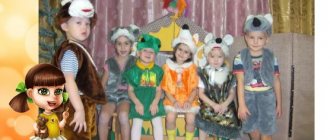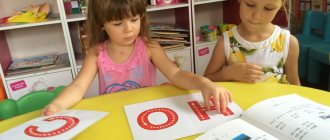5) Think about what sectors of the economy work so that we can drink a glass of milk in the morning
So that we can drink a glass of milk in the morning:
- Animal husbandry . Cows give milk.
- Packaging industry. The milk is packaged in factory-made containers.
- Transport. Milk is delivered to retail outlets.
- Trade. Milk is on sale.
- Mechanical engineering. A refrigerator is being manufactured.
- Glass industry. A glass for milk is being made.
Financial education of children
What's the importance?
The world of finance seems far from a child only at first glance. In fact, children are included in the economic life of the family very early. When they go to the store with their parents, watch advertisements on TV, they receive an envelope with money as a gift from their grandparents.
Therefore, it is important to introduce children to financial and economic relations as early as possible, starting from 5-6 years old. By this time, they begin to develop logical thinking and increase interest in the adult world.
Financial literacy is developed as a child grows up and goes through various life stages: the first independent trip to the store, paying for travel, receiving pocket money, etc.
What should a child know?
Now let's talk about what children should know about the world of money and finance. All information can be divided into 5 large groups.
The first group is knowledge about money:
- what kind of money is there?
- how you can use money;
- how to count money correctly;
- spending money wisely;
- how to learn to save money;
- ways to protect funds.
The second group is knowledge about needs:
- what are the needs;
- desires and capabilities of a person.
The third group is knowledge about the product:
- familiarization with the concepts of “price”, “purchase”, “sale”;
- what determines the price of a product;
- how to determine the quality of a product.
The fourth group is knowledge about work:
- what kind of work there is, getting acquainted with professions;
- how to determine the product of labor;
- remuneration, familiarization with the concept of “wages”;
Fifth group – knowledge about the budget:
- what is a budget, what does it consist of;
- family expenses and income;
- what sources of income may be;
- ways to save your budget.
This information will help the child become familiar with and navigate basic economic concepts.
A story about the livestock industry according to plan for grade 2
- Animal husbandry.
- Produces meat, milk, cheeses, sausages, eggs, wool, honey.
- Provides people with food and clothing.
- The industry employs livestock breeders, veterinarians, milkmaids, shepherds, beekeepers, livestock specialists, horse breeders, poultry farmers and many others.
A story about the trade industry according to plan for 2nd grade
- Trade.
- Provides services for the sale of food, industrial and other household goods to the public.
- Provides communication between product manufacturers and buyers.
- The industry employs salespeople, cashiers, managers, loaders, stackers, sorters, and consultants.
A story about the industry according to plan for grade 2
- Industry.
- Produces various industrial goods: steel, rolled products, machinery and equipment, household appliances, cars, electronics, raw materials and much more.
- Provides industrial goods and services other sectors of the economy.
- The industry employs metallurgists, machine builders, miners, oil workers, mechanics, assemblers, welders, and power engineers.
What is financial literacy?

Financial literacy is the knowledge, skills and abilities that a person needs to make smart financial decisions, as well as to achieve financial well-being.
A financially literate person is a person who:
- knows how to competently handle funds, preserve and increase them;
- keeps records of income and expenses;
- navigates the economic situation of the country;
- can recognize signs of financial fraud;
- fulfills its obligations as a taxpayer;
- knows how to navigate banking services.
For a long time, it was believed that financial literacy was necessary only for employees of financial institutions. But a 2017 survey by the National Financial Research Agency found that people are increasingly complaining about a lack of economic and financial knowledge that would help them, for example, avoid taking part in dubious financial transactions. And only 12% of respondents believe that they have a sufficient level of financial awareness.
Therefore, our country is now actively pursuing a policy to increase financial literacy among the adult population and the younger generation. Special literature is published for children, and economic games and applications are created. Information sites and online courses on personal finance management are intended for adults.
Useful materials for children and parents
10 Best Financial Literacy Books for Children of All Ages:
- Evgenia Bliskavka. Children and money.
- Bodo Schaefer. A dog named Mani.
- Igor Lipsits. Amazing adventures in the country of Economics.
- Anna Voronina. Mathematics and money: buy, sell, exchange.
- Tatiana Popova, Anastasia Bulavkina. Magic ATM.
- Elena Uleva. Where does the money come from? Encyclopedia for kids.
- Heidley Fidler. Instructions for money. An amazingly fun guide to the world of finance.
- Sergey Bidenko, Irina Zolotarevich. I want to earn money. Useful tips for children and teenagers +60 ideas for making money.
- Sergey Bidenko, Irina Zolotarevich. Financial stories for teenagers.
- Jerry Bailey, Felicia Law. Your money.
5 best online games:
- “The path to financial success”, (game from Volgograd State University) https://pfu.volsu.ru/index.php/site/index
- Financial game Portfolio https://fgramota.org/game/
- Finnznaika https://finznaika.rf/site/abilities-kids
- Monetkiny https://monetkiny.rf/
- Financial simulator “CachGo”, based on Robert Kiyosaki’s game “Cash Flow” https://cashgo.ru
5 best cartoons:
Still from the animated series “Smeshariki”, Russia, 2020.
- A series of the cartoon “Smeshariki” called “The ABC of Financial Literacy”
- Series of the cartoon "Fixies":
- Money;
- Money box;
- How money is made.
- "Rich Beaver"
- “The ABC of money. Lessons from Aunt Owl."
- "Dunno on the Moon"
5 best board games:
- A game for the little ones - “The Adventures of Belobok the Cat, or Economics for Kids.”
- “Cash Flow” is a financial game from Robert Kiyosaki, an American entrepreneur, author of the book “Rich Dad Poor Dad.”
- Monopoly is an economic game that gained great popularity back in the 20th century.
- LikeGame is a board game about business in Russia. Suitable for older students.
- Training game “Money can’t buy happiness.” Designed for schoolchildren and teenagers.
Other board games for children: choosing the best of the best.
Teaching the basics of financial literacy is a necessary stage in the full development of a child. Knowledge about the world of finance will help him in the future to form the right attitude towards money and reasonable economic behavior.
1) Remember and tell us how people work in your city (village)
There are many industrial enterprises in my city. They employ workers of various specialties - metallurgists, technologists, electricians, food and light industry workers, and energy workers.
These people produce goods and services that everyone needs. Without their work, we would be deprived of all the achievements of modern civilization.
2) What sectors of the economy are represented in the photographs?
The photographs show the following industries: food industry, construction, metallurgy, crop production, trade, livestock farming, automotive industry
3) Tell us about them according to plan:
- Industry name;
- what it produces;
- what does it mean to people?
- What professions do people work in this industry?



